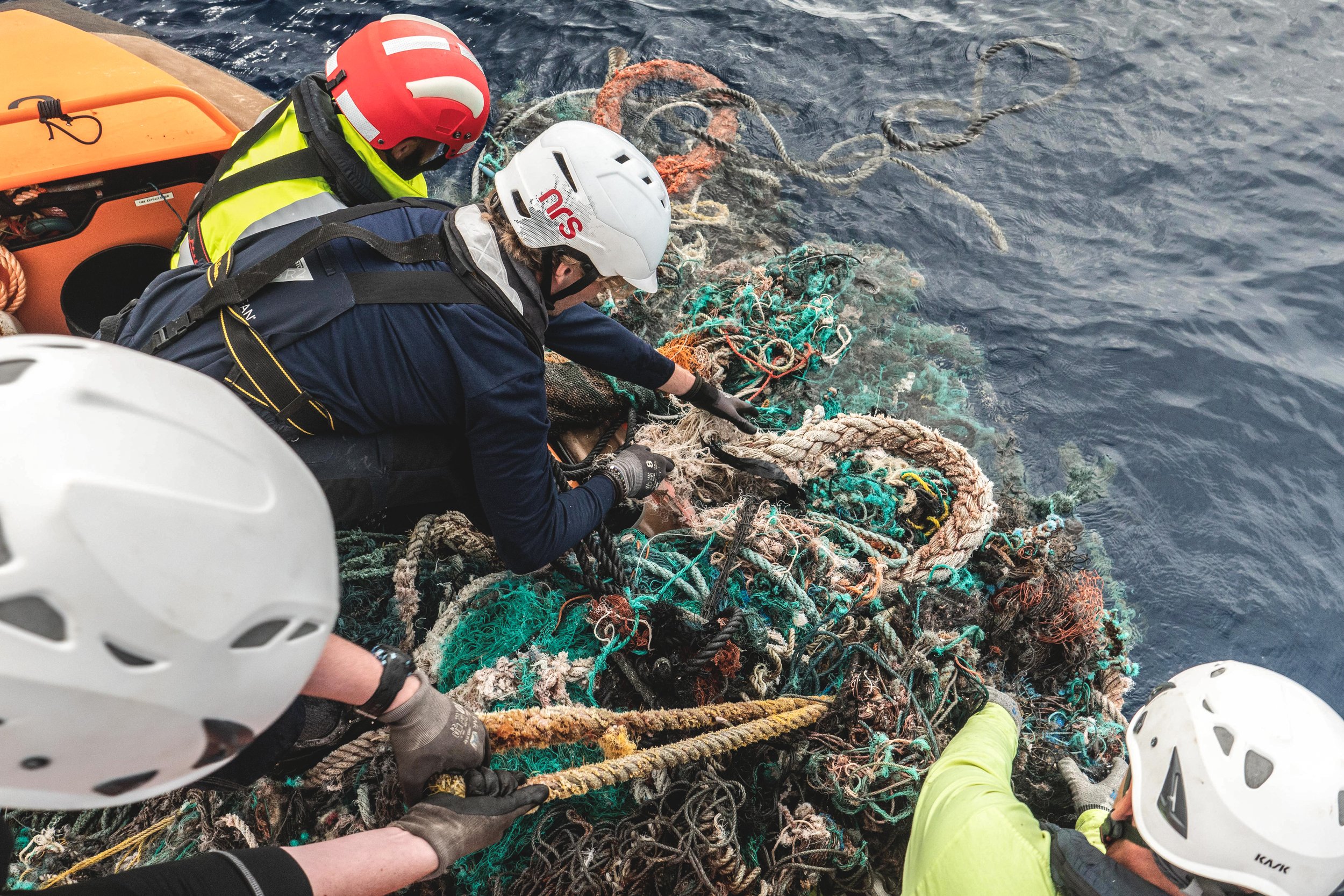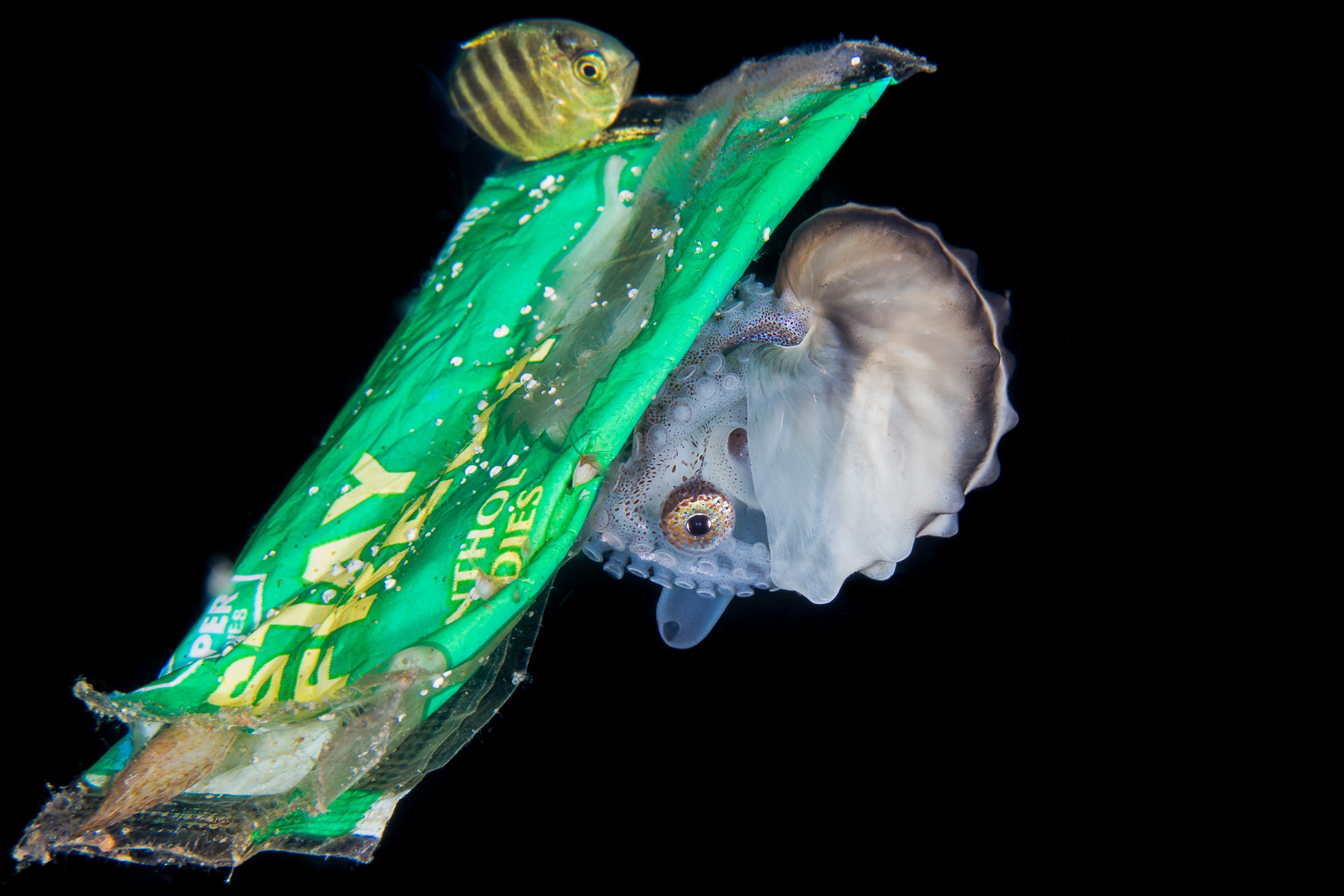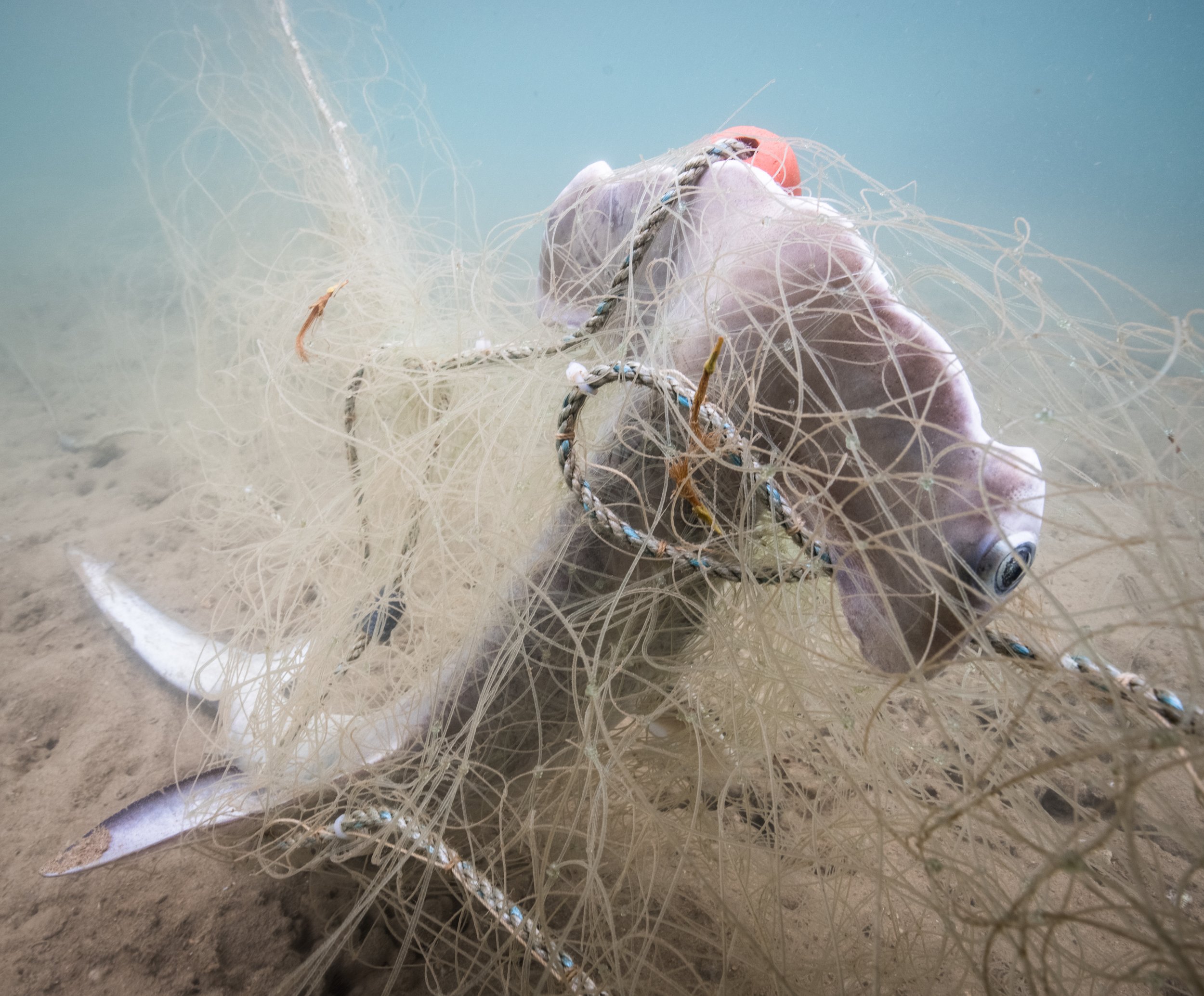ocean plastic
Of all the pollution entering the marine environment from land-based sources, plastic is one of the main elements, making up an estimated 80% of all land-based source pollution. It can be found from the Equator to the poles, from the coast out to the most remote areas of the ocean and from the surface down to the bottom of the deepest trenches. It is thought that the majority of plastic in the ocean remains in coastal areas but some does escape to the open ocean where currents spread it around the entire globe, in particular to the five ocean gyres where it accumulates, earning them the name 'ocean garbage patches'. Not only do currents transport the plastic around the globe, together with the sun, wind, waves and bacteria, they are also responsible for breaking it up into ever-smaller pieces. While some plastics remain on the surface of the water, many of these particles lose their buoyancy over time and sink to the ocean floor, becoming embedded in the sediment there.
A large percentage of the plastic we produce today (over 400 million tonnes of plastic every year, and this is expected to double by 2050) is used once and then discarded, leading to one of the greatest challenges of our time, its disposal. Less than 14% of single-use plastic is recycled globally, 56% of it is sent to landfills, 25% is incinerated and the rest lost, leaving somewhere between 8 and 14 million tonnes to find its way into the ocean every year as a result of inadequate waste management, neglect and ignorance.
Since the beginning of large-scale plastic production in the 1950s plastic has been steadily invading the ocean but it was only with the discovery of the Great Pacific Garbage Patch (GPGP) in 1997 that ocean plastic made it into the news. Since then, with the increase in availability of ocean research and greater interest in and media coverage of the state of the ocean and its inhabitants, ocean plastic has finally become a topic of public concern.

Srikanth Mannepuri /Ocean Image Bank

The Ocean Cleanup

Liang Fu/Ocean Image Bank

Toby Matthews/Ocean Image Bank
Ocean plastic is diverse in shape, size, chemical make-up, buoyancy and level of weathering (this is dependent on their time in the water). Weathering ensures that the plastic breaks up over time - a thin plastic bag can break up over the course of around 20 years, a plastic bottle can take up to 450 years to break up - but they never disappear. Plastic never completely decomposes, once it is in the ocean it is there to stay unless we can find a way to remove it, a seemingly impossible task due to the size and number of particles already present. An estimated 51 trillion microplastic particles already pollute the ocean and the number is growing every day as more plastic enters the ocean and as each and every piece of plastic in the ocean continuously breaks up into ever smaller pieces.
Ocean plastic is categorized by size into macroplastics, microplastics and nanoplastics. Macroplastics are measured to be larger than 5 mm, microplastics between 1 μm and 5 mm and nanoplastics cover anything smaller than 1 μm.
Macroplastics include items such as fishing nets, plastic bags, packaging, bottles, flip-flops, toothbrushes, masks or gloves.
Microplastics are separated into two classes, primary and secondary. Primary microplastics are those which have been specifically designed and manufactured to be no more than 5 mm in size, such as nurdles, the tiny plastic pellets produced by the plastics industry in their billions to be melted down and converted into plastic products, or microbeads, used for example in cosmetic products like toothpaste. Other primary microplastics originate during use, for example the miniscule particles which are released from car tyres, from paint on buildings, bridges or ship hulls, or from clothing, where fibres are shed during washing cycles. An estimated 19 to 31% of the microplastics found in the seas are primary microplastics, of these 35% come from clothing and 28% from car tyres.
Secondary microplastics and nanoplastics come from the decomposition of larger items of plastic into tiny fragments or particles over time. An estimated 69 to 81% of microplastics found in the ocean are from secondary microplastics.
It is really important to recognize that plastic doesn't break down and disappear over time but that it breaks up into the tiniest of particles and moves from the macro to the secondary micro and then into the nano category, making its detection and collection many times more challenging.
dive in deeper
Global Plastics Outlook: Policy Scenarios to 2060
World Bank: Where Is the Value in the Chain? : Pathways out of Plastic Pollution
DOSI: Beyond Plastic: Pollution in the Deep Ocean
PWWF: Plastic crediting and plastic neutrality
BFFP: ”BRANDED Volume III: Demanding Corporate Accountability for Plastic Pollution
GESAMP: Guidelines or the monitoring and assessment of plastic litter and microplastics in the ocean
Only One: Not Disposable: The fight to end plastic pollution
Only One: Material Change: Rethinking plastic and stopping pollution at the source
Spotlight on the Great Pacific
Garbage Patch
Gyres form when wind-blown water meets the force of the rotation of the planet and its direction is changed. The circumventing currents of the gyres encompass large areas of calm water, meaning that anything brought to those waters accumulates there and remains due to the low level of movement within. Gyres are areas traditionally shunned by fishers for the low catch rates and by sailors for their lack of wind.
The North Pacific Gyre covers an area of about 1.6 million km², with a clockwise rotating ocean drift current in the northern subtropics of the Pacific Ocean formed by the California Current in the east, the North Equatorial Current in the south, the Kuroshio Current in the west and the North Pacific Current in the north. The Great Pacific Garbage Patch (GPGP) was only brought to the attention of the public after Charles Moore, a participant in the 1997 Transpacific Yacht Race, found a stretch of floating debris on his way home. Two areas have formed within the gyre, the Eastern Garbage Patch which lies between California and Hawaii and the Western Garbage Patch which stretches out from Hawaii towards Japan.
Media coverage of the existence of a patch or island of trash in the Pacific helped us become aware of the ocean plastic problem. It also led to a common misconception about what the GPGP really is (and even to some heading off in the hope of hitting a floating mass of plastic that could simply be scooped up and brought back). In reality there is of course no island but rather a vast expanse of millions of square kilometres of ocean with waste spread out over it.
Since Charles Moore’s discovery, numerous research trips have established the true extent of the problem: it is now believed that the mass of plastic in the GPGP is as much as 100,000 tonnes. The majority of this plastic stems from the fishing industry but plastic bags, packaging, bottles, flip-flops, toothbrushes, masks or gloves are also to be found there, washed out to sea from disposal areas or washed overboard from container ships, all of these items are brought to the gyre by the currents and then trapped within its calmer waters.
The question of responsibility for the garbage patch plays an important role: far away from land, the patch is beyond the jurisdiction of any State. With no State responsible for the area in question and no one entity responsible for the pollution, work to clean up the patch has fallen to a group of NGOs and philanthropic entities around the world. The NGO leading the work is The Ocean Cleanup, further information on their ocean work can be found here. In 2021 they made a short film of the various items of macroplastic which they collected from the GPGP that year, including washing baskets, toilet seats and even a fridge:
How to keep plastic out of the ocean/The Economist






